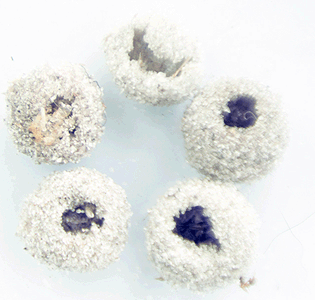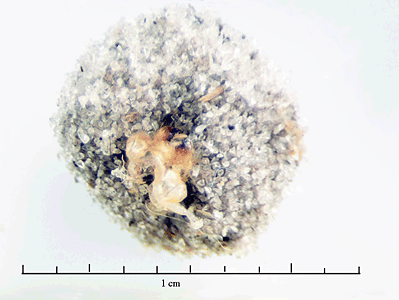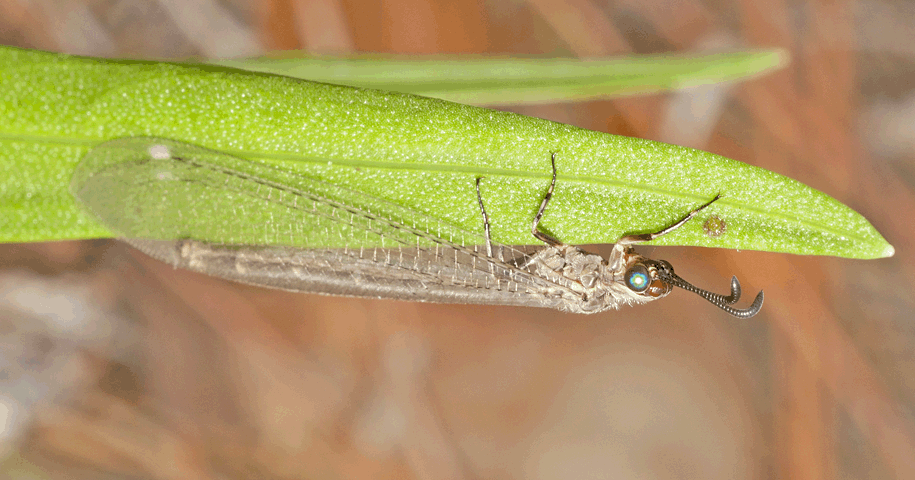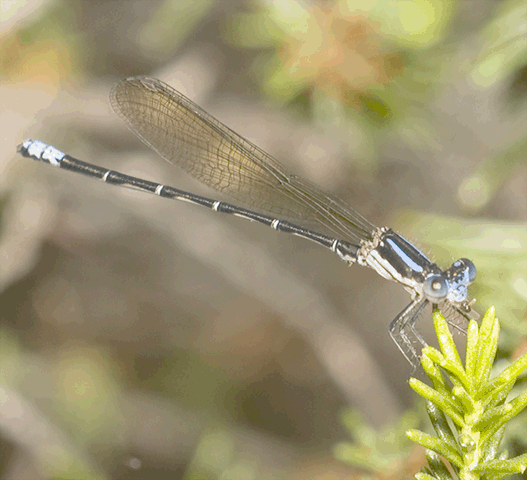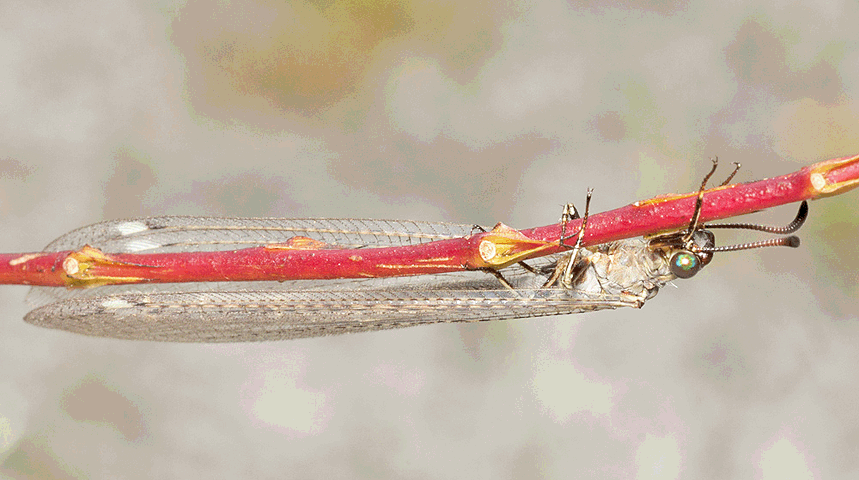Order Neuroptera (Antlions and Lacewings) in the Christopher B. Smith Preserve
Order Neuroptera Characteristics: Worldwide, there are more than 6,000 species of neuropterans. All have complete metamorphosis (egg, larval, pupal, and adult stages). A larva's body form varies among the different families of neuropterans, but usually has three pairs of thoracic legs, each with two claws. It also has large, curved jaws for impaling prey. After impaling its prey, a larva injects toxins and sucks out the juices. Larvae of some species camouflage themselves with debris (bodies of dead insects, lichens, and dead flowers). The pupal stage of a neuropteran is enclosed in a cocoon, made of silk, soil, or other debris.
All adult neuropterans are soft-bodied and have two pairs of large wings of about the same size. The wings are intricately-veined. This characteristic gives neuropterans their nickname, "nerve-winged insects." At rest, the wings are folded flat or held tent-like over the abdomen. They have large compound eyes, long antennae, and chewing mouthparts. Some species are predators, while others eat nectar. They are active at night; most are weak fliers.
Interactions in the Smith Preserve: Most larvae are specialized predators; some eat only aphids, whiteflies, and scale insects; others eat only ants. There are some larvae that eat only freshwater sponges and others parasitize spider eggs. Aquatic larvae are an important part of the food web, being predators of small organisms, and prey for fish and other aquatic animals. Many adults are omnivores, eating both plant and animal tissues. They are prey for moths and beetles.
Family |
Species Name |
Common Name |
Chrysopidae |
Ceraeochrysa sp. |
|
Chrysopidae |
Unknown |
|
Chrysopidae |
Unknown |
|
Myrmeleontidae |
Unknown |
Family Chrysopidae Ceraeochrysa sp. ... Green Lacewings
|
Family Chrysopidae Unknown Species ... Green Lacewings
|
Family Chrysopidae Unknown Species ... Green Lacewings
|
Family Myrmeleontidae Unknown Species ... Antlions
|


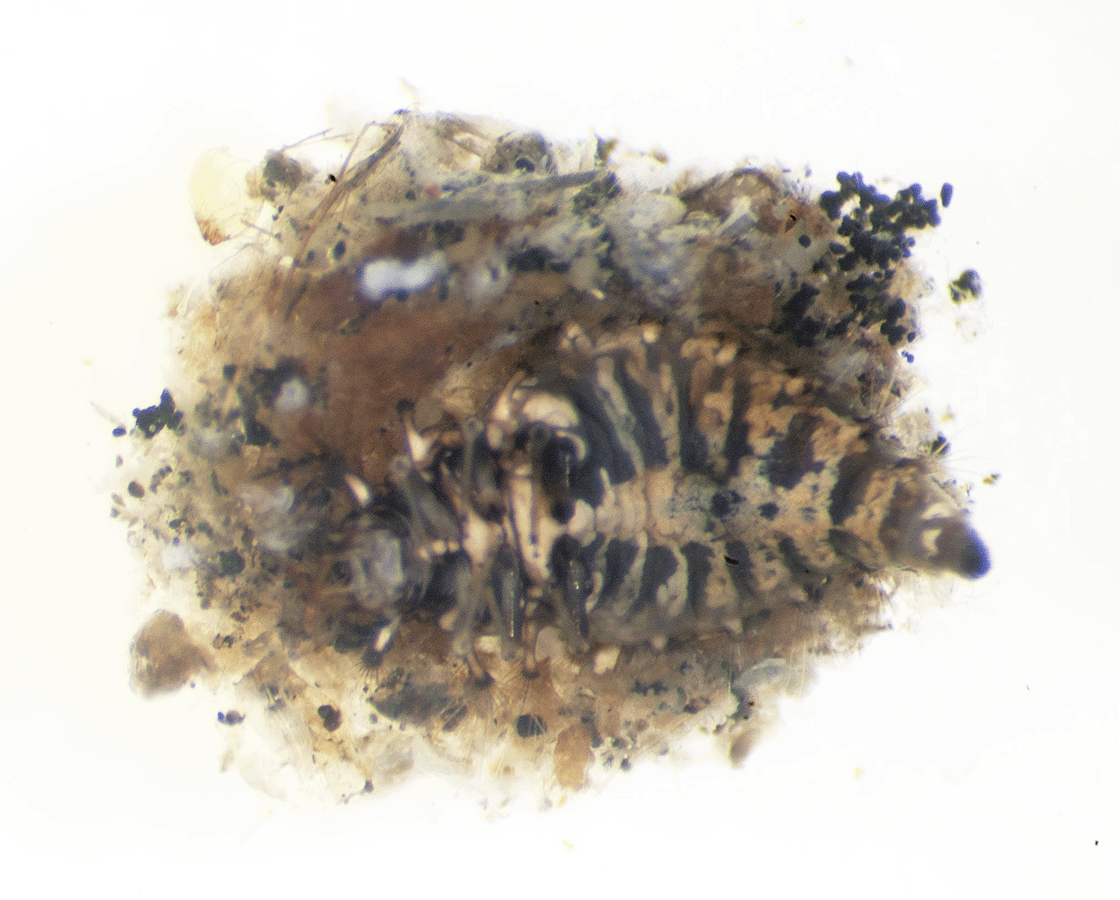
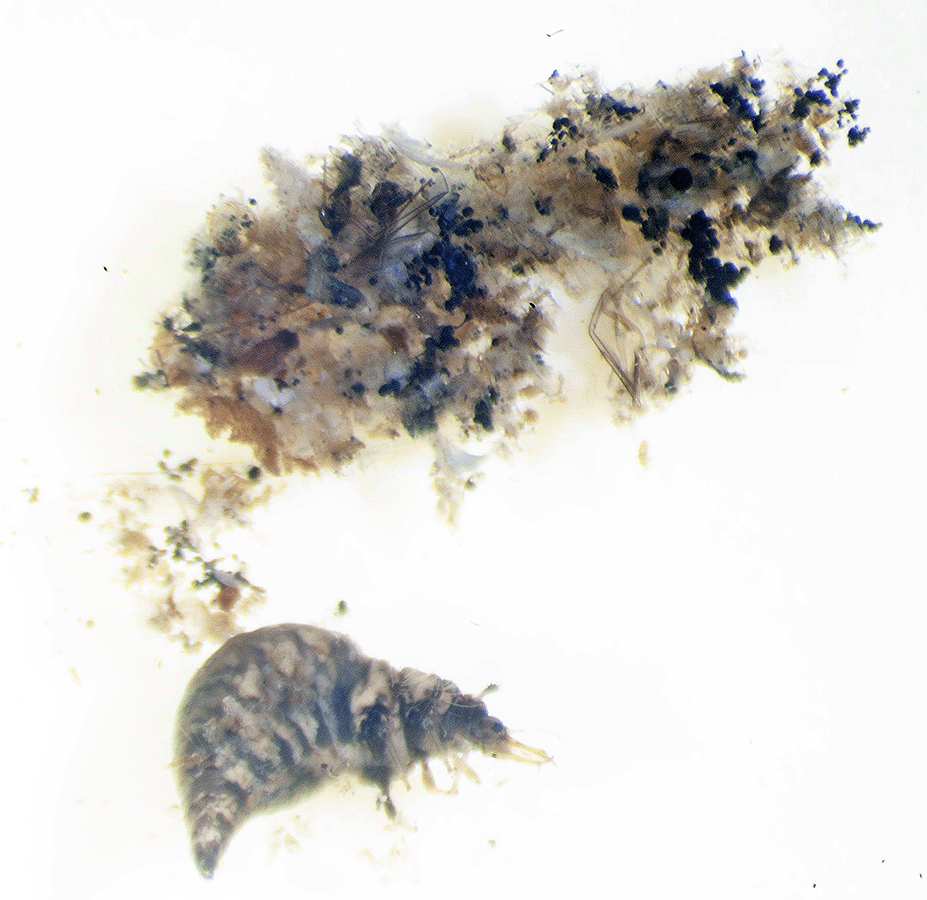
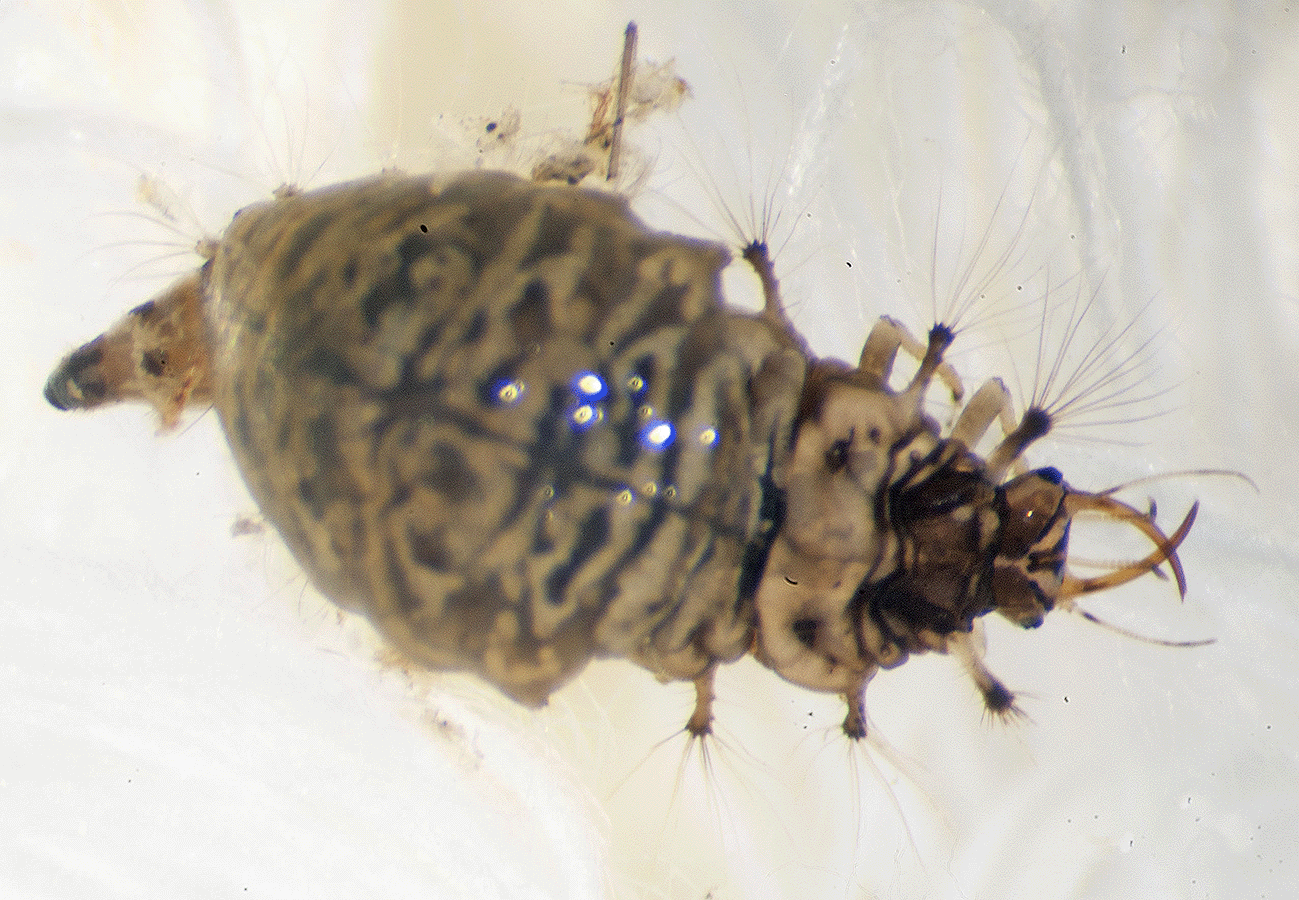
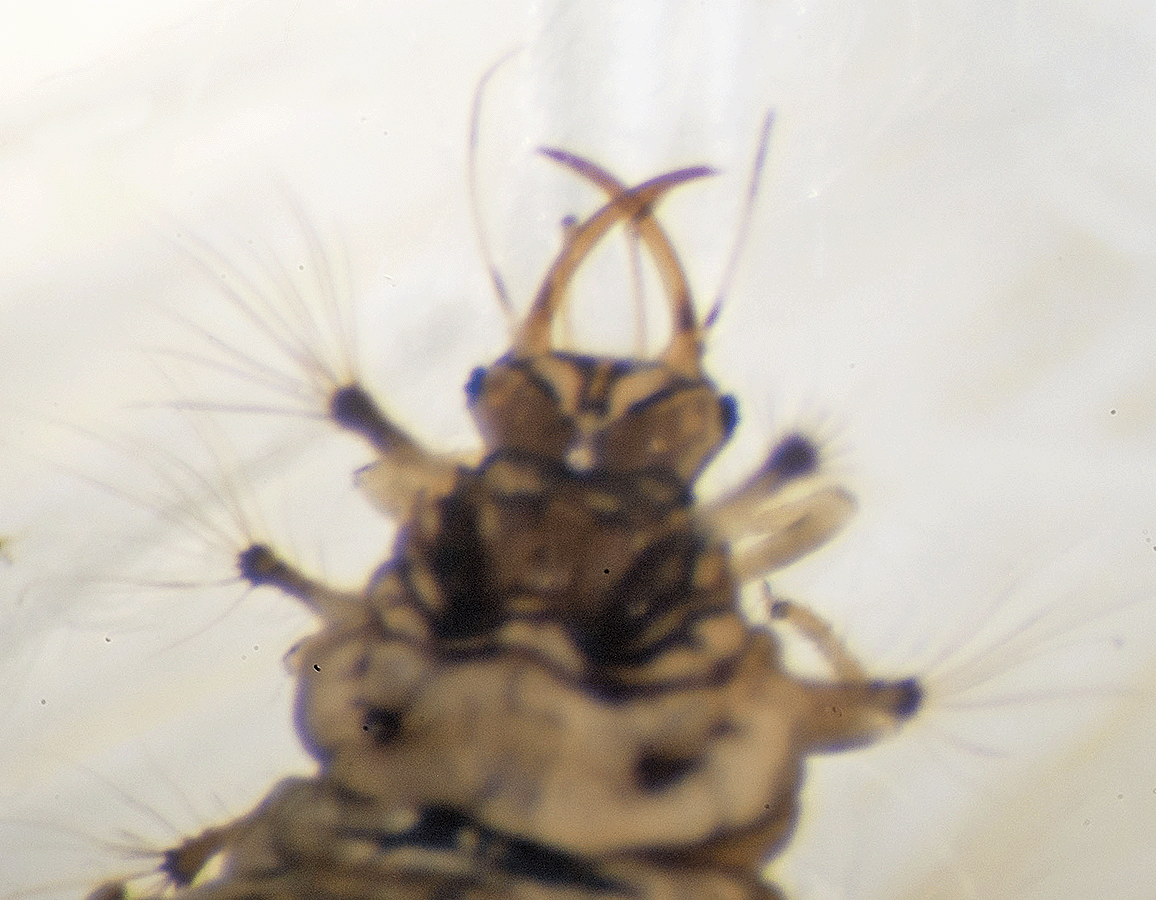
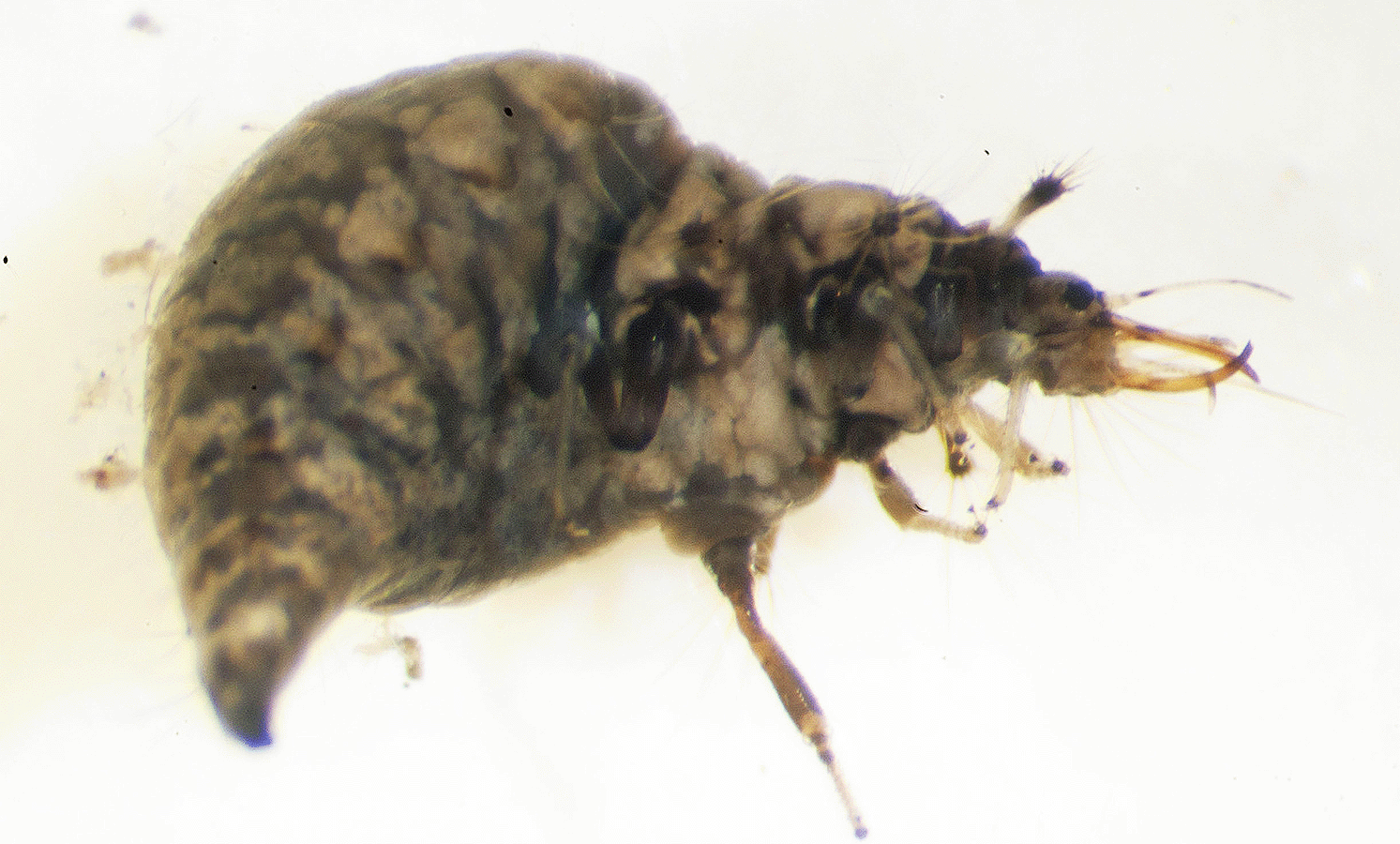
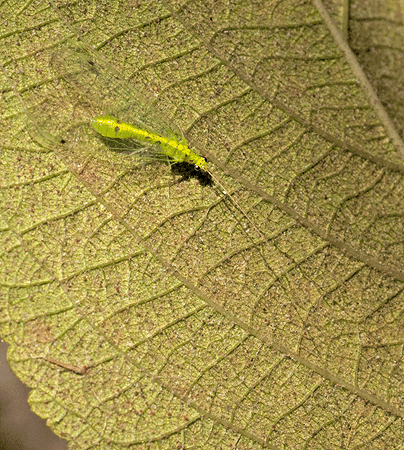
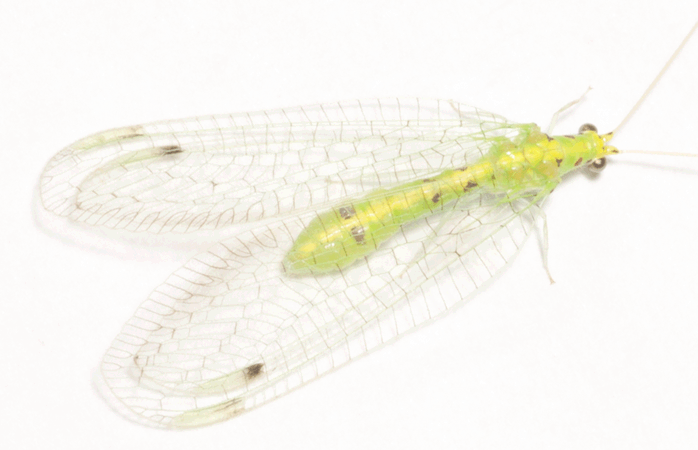
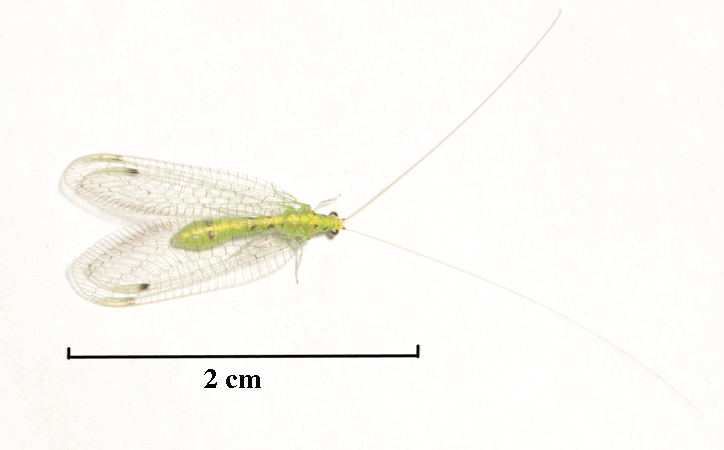 Normally, adult green lacewings are active primarily at dawn or dusk, or at night.
Normally, adult green lacewings are active primarily at dawn or dusk, or at night. 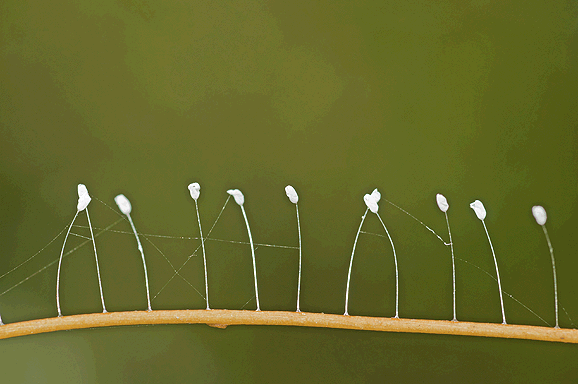
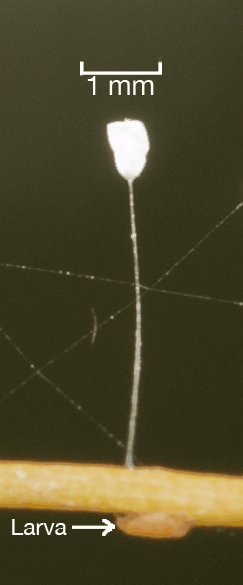
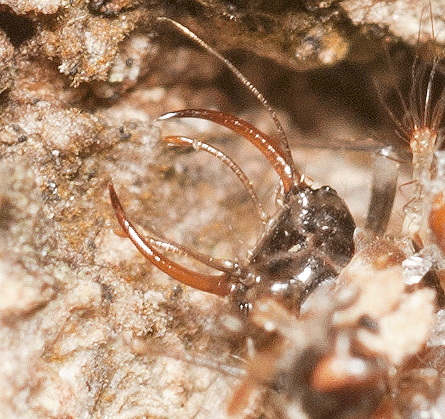 Lacewing larvae are usually found in vegetation, looking for food. As shown in the third photograph, they have specialized mouthparts with large, sickle-shaped mandibles and maxillae that interlock to form pincers. Once impaled on these pincers, a prey's body contents are sucked out through hollow food channels running between the surfaces of the mandibles and maxillae.
Lacewing larvae are usually found in vegetation, looking for food. As shown in the third photograph, they have specialized mouthparts with large, sickle-shaped mandibles and maxillae that interlock to form pincers. Once impaled on these pincers, a prey's body contents are sucked out through hollow food channels running between the surfaces of the mandibles and maxillae. 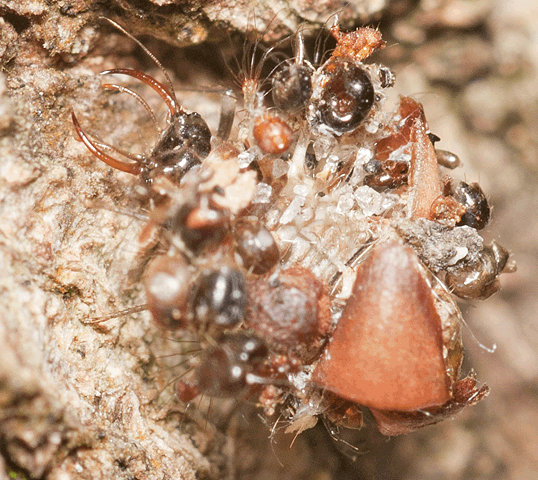
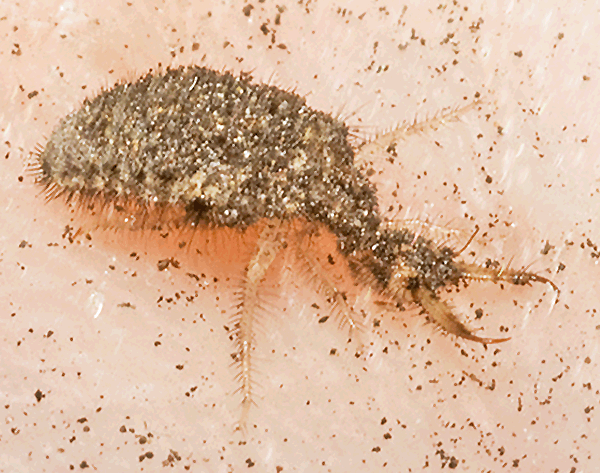 There are 22 species of antlions in Florida, more species than in any other state in the Eastern United States.
There are 22 species of antlions in Florida, more species than in any other state in the Eastern United States. 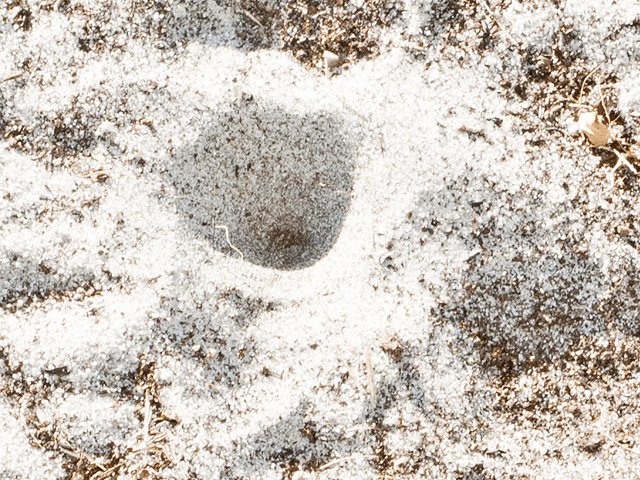 Each individual constructs its own pit, like the one shown in the second photograph. After pit construction, the antlion waits with open jaws at the bottom of the pit for prey to fall down the slippery funnel of sand grains. Once impaled on its sickle-shaped jaws, the prey's body contents are sucked out through the hollow food channels running between the surfaces of the mandibles and maxillae. The larva (nymph) in photograph one was removed from its pit to photograph.
Each individual constructs its own pit, like the one shown in the second photograph. After pit construction, the antlion waits with open jaws at the bottom of the pit for prey to fall down the slippery funnel of sand grains. Once impaled on its sickle-shaped jaws, the prey's body contents are sucked out through the hollow food channels running between the surfaces of the mandibles and maxillae. The larva (nymph) in photograph one was removed from its pit to photograph.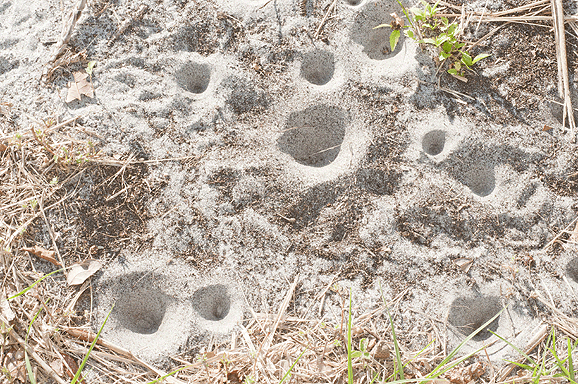
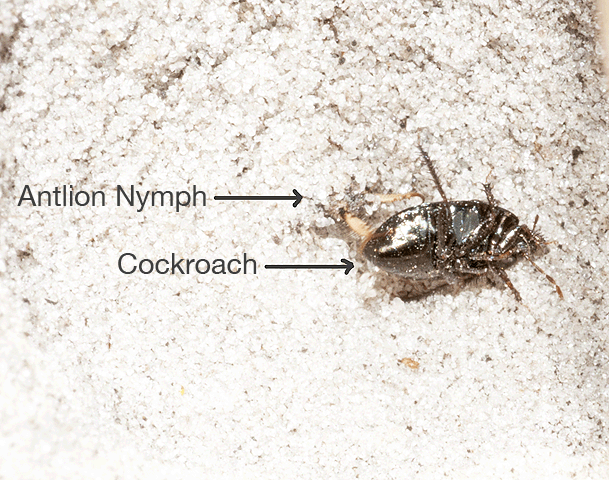 The photograph at right shows a cockroach has fallen into a pit and an antlion is waiting. Only the antlion larva's jaws are discernible.
The photograph at right shows a cockroach has fallen into a pit and an antlion is waiting. Only the antlion larva's jaws are discernible.